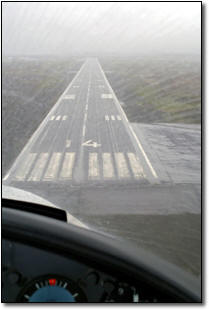Subscriber question:
"Which is the better method to maintain the glideslope on an ILS approach – speed on pitch and glide on power, or speed on power and glide on pitch?" - Damian H.
Bob:
“For me, the answer is pitch for glideslope and power for speed. But this explanation is too simple.
 Think of it this way – the glideslope is a defined path. If you tried to use pitch to control airspeed, you would be up and down on the glideslope. I try to maintain the glideslope with pitch and adjust the power to control airspeed.
Think of it this way – the glideslope is a defined path. If you tried to use pitch to control airspeed, you would be up and down on the glideslope. I try to maintain the glideslope with pitch and adjust the power to control airspeed.
For those who have coupled autopilots, most of us would agree that the autopilot does a better job than we do on average. It’s interesting to note that the autopilot flies the glideslope with pitch adjustment since it has no control over power.
Having said that, it’s important to note that when adjusting airspeed with power, we need to make a small adjustment in pitch to hold glideslope when changing power. Thus, there is some interrelationship.
Know the proper configuration and power setting for your airplane in order to approximate the glideslope rate of descent. You can approximate this rate of descent for a 3 degree glideslope by multiplying your ground speed by 5. For example, at 100 knots multiplied by 5 would equal a 500 foot per minute rate of descent.”
